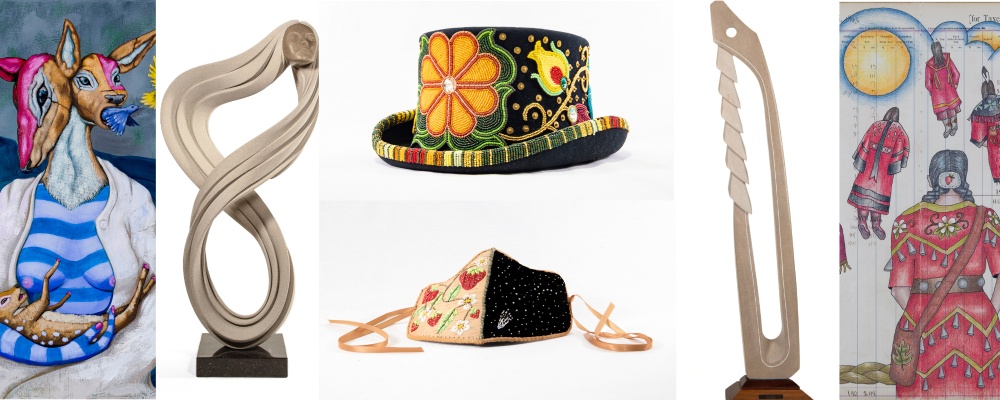Blog
Native American Heritage Month
November 01, 2024

Native American Heritage Month traces its roots back to New York, NY, at the turn of the twentieth century. New York City based Doctor Arthur C. Parker, a Native American archaeologist and historian, fought for federal recognition for Native Americans throughout his career. From his advocacy, New York became the first state to recognize “American Indian Day,” originally acknowledged in May.
In 1990, President George H.W. Bush signed House Joint Resolution 577 into law, declaring November National Native American Heritage Month.
Today, Native American Heritage Month continues to call attention to the cultures, traditions, and achievements of indigenous peoples and of their descendants. This recognition provides the opportunity to reckon with our past and reflect on the mistreatment of Indigenous people throughout American history. It is also a time to celebrate those who continue to shape our society and lead within our communities today.
This month, and all year long, the GVSU Art Museum recognizes the People of the Three Fires, the Ojibwe, Odawa, and Potawatomi, whose native land was stolen and is where our campus stands today. We pledge to provide indigenous artists with the platform to share their talents, artwork, and stories and to create an environment where the history and traditions of artists indigenous to this area can be recognized and celebrated. We also strive to collect, exhibit, and care for indigenous-made artwork and objects in sustainable and responsible ways. While Native American Heritage Month is a small gesture, it is a step forward. The GVSU Art Museum will continue to make it our mission to elevate the stories of all artists in our collection.
Jonathan Thunder infuses his personal lens with real-time world experiences using a variety of mediums. He is known for his surreal paintings, digitally animated films, and installations in which he addresses subject matters of personal experience and social commentary. Jonathan is an enrolled member of the Red Lake Band of Ojibwe.
Explore artwork in the collection by Jonathan Thunder.
Local Grand Rapids artist, Jason Quigno’s sculptures all start the same way, as a block of natural soapstone, alabaster, limestone, marble, basalt, or granite. From there he sculpts with the movement of the stone, creating an apparent flow from something rigid. By polishing some areas and exposing the stone’s raw texture in other areas, he creates both balanced abstract forms and harmonious naturalistic forms. Intending to create a sense of peace, Quigno uses simple lines to craft a sense of fluid movement.
Exploreartwork in the collection by Jason Quigno.
Naawikwegiizhig, also known as Adam Avery, is a member of the historic Saginaw, Swan Creek, and Black River Bands and is a direct descendant of the Saginaw Chippewa Indian Tribe of Michigan. Growing up in the Red Arrow Family, he was immersed in the art of black ash basket making. Throughout his life, he has gained knowledge of Woodland traditions and legends and wants to share these values and teachings gifted to him by his family with future generations.
Explore artwork in the collection by Adam Avery.
Kelly Church is a member of the Match-e-be-nash-she-wish Band of Potawatomi Indians of Michigan. She is a black ash basket maker, Woodland style painter, birchbark biter, and educator. A member of the Gun Lake Band in Michigan and a Grand Traverse Band of Ottawa and Ojibwe descendent, she comes from an unbroken line of black ash basket makers and from the largest black ash weaving family in the Great Lakes region. Church studied the Odawa language from her paternal grandmother and learned black ash basketry from her father, Bill Church, and cousin John Pigeon. Her paintings are inspired by the Woodland style, also known as Legend or Medicine painting.
Explore artwork in the collection by Kelly Church.
Growing up in Michigan, artist Dennis Christy grew up watching his grandmother weave baskets and would sit with her and carve objects from wood. After studying art at the Institute of American Indian Arts in Santa Fe, New Mexico, he returned to Michigan and his Saginaw Chippewa culture, where he was introduced to and then taught stone carving. He uses a variety of stone, from alabaster to marble, often working with stone sourced from Michigan’s Upper Peninsula.
Explore
artwork in the collection by Dennis Christy.
Ceramicist, painter, and author Shirley Brauker was a member of the Little River Band of Ottawa Indians. Her artistic themes included images of animals, nature, woodlands, and the Great Lakes. She also painted and drew ledger art, a narrative art form in which the artist paints directly on top of old ledgers, certificates, bonds, or even currency. Ledger art is part of a long tradition of Indigenous people documenting and reclaiming their history in their own way.
Explore artwork in the collection by Shirley Brauker.
Explore other artwork by indigenous peoples in the GVSU Art Collection.
Jonathan Thunder, Deer Woman: Speak of Hope, acrylic on
canvas, 2020, 2021.19.1.
Jason Quigno, Manidoo Nodion (Spirit Wind), Indiana limestone
on black granite base, 2020, 2020.24.1.
Adam Avery, Beaded Top Hat, wool felt top hat with Ojibwe
floral beaded appliqué, 24k gold plated beads, Swarovski crystals, and
brass sequins, 2021.20.1.
Kelly Church, Breathe in the Beauty of the Day and the Beauty of
the Night, birch bark, quills, Rit dye, thread, velvet and
beads, 2021, 2021.22.1.
Dennis Christy, Untitled (The Bow), carved stone, 2024.33.1.
Shirley Brauker, Ledger: Missing and Murdered, mixed media on
historic ledger, 2021.21.2.
